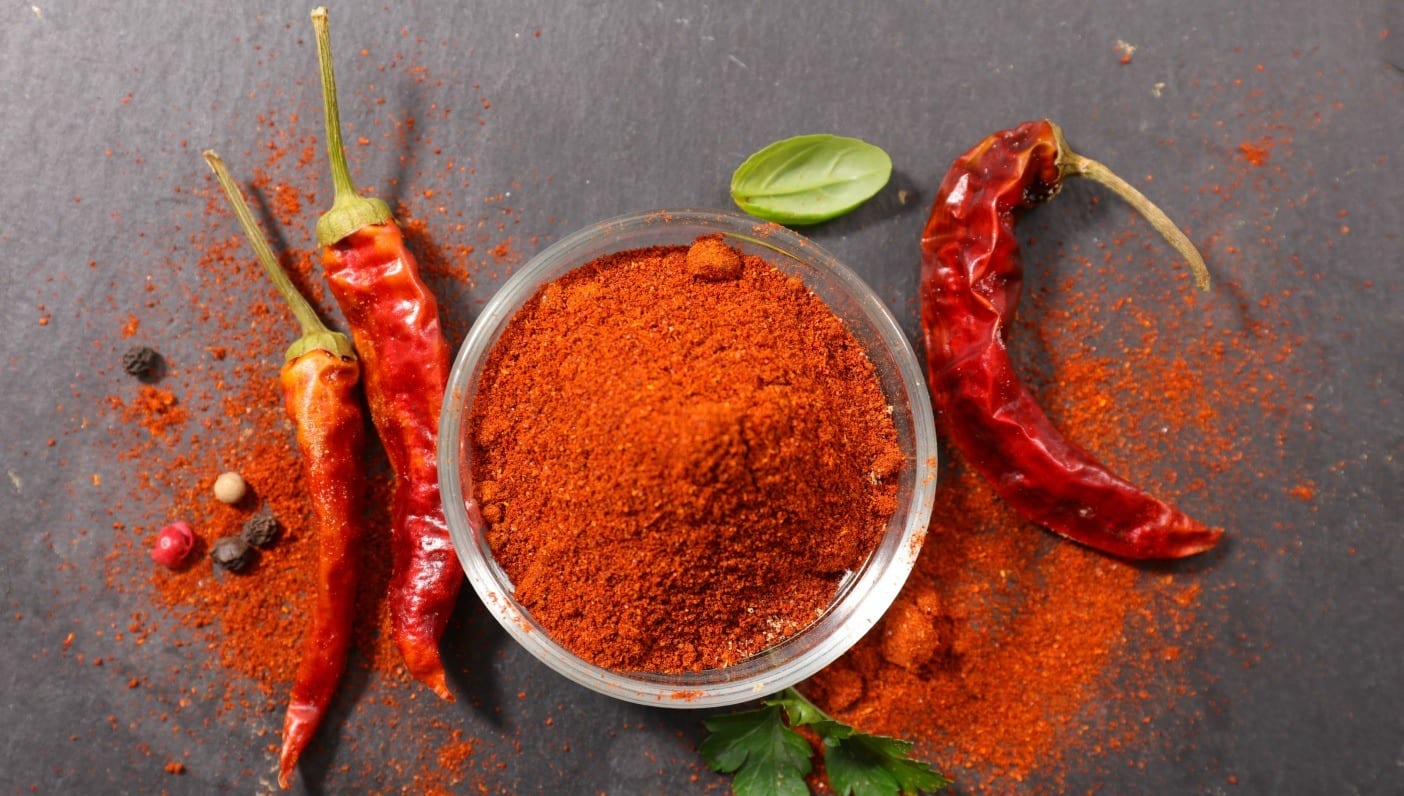
Name: Cayenne Pepper
Most Commonly Found: Cayenne is commonly found in spicy dishes as a powder, in its whole form, or in a thin, vinegar-based sauce. It is common in various forms of Asian cuisine. It is also found as an herbal supplement.
It is now largely ground in India, East Africa, Mexico and the United States. As a whole, chiles originated in South America, where they have been cultivated since prehistoric times. It then spread throughout the tropics and sub-tropics by the Spanish and Portuguese.
Stone Cold Facts: Cayenne pepper’s name originates from the Cayenne region of French Guiana and derives from a Tupi Indian name.
Chiles have been long known as “Indian” pepper—meaning “of the New World” rather than India. Cayenne is also commonly known as a healing spice that is put in a variety of food dishes.
What to Heal: Cayenne pepper’s healing properties are widely-known. It has been used to heal heartburn, delirium, tremors, gout, paralysis, fever, dyspepsia, flatulence, sore throat, atonic dyspepsia, hemorrhoids, menorrhagia in women, nausea, tonsillitis, scarlet fever and diphtheria
Its anti-irritant properties make it a great choice for healing for upset stomach, ulcers, sore throats, spasmodic and irritating coughs, and diarrhea. For colds, it helps to break up mucus and clear out the nasal passages. Since it helps produce saliva, it is also beneficial to oral health.
Because it is extremely high in a substance called capsaicin, cayenne pepper acts to cause temporary pain on the skin, which sends chemical messengers from the skin into the joint, offering relief for joint pain.
It also has anti-bacterial properties, supports weight-loss and works as a topical remedy to treat snake bites, rheumatism, sores, wounds and lumbago.
Cayenne is a circulatory stimulant, increasing the pulse of the lymphatic and digestive rhythms. It helps to streamline the natural process of detoxification and helps produce sweat. When combined with lemon juice and honey, its tea is a morning beverage for today body detox.
How to Heal: Cayenne pepper can be added as a spice to food or beverages, used topically, and consumed as a supplement.
Related Chakras: It’s healing for the root chakra and the heart chakra.
Spirituality and Psychic Properties: Some say that the pepper, when combined with water for fasting, become effective in cleansing the cardiovascular system and seems to expand circulation into all the vital glands and nerves of the cerebrospinal system with pleasant aphrodisiac effects. When combined with breathing exercises, transmutation is greatly enhanced so that the Kundalini energy becomes a flame of bliss and love.
History and Lore: Records of cayenne are found on ancient human dwellings and fossil feces, dating as early as 7,000 BCE. Cayenne was first cultivated between 5,200 and 3,400 BCE. In the South American ancient Huaca Prieta, they date back at 2,500 BCE.
They were then introduced to Europe by Peter Martyr, the historian who accompanied Columbus to the New World, where they were initially sent to Spain, before spreading throughout Africa, Europe and Asia, where the spice became popular in local cuisine.
What are your favorite ways to use cayenne?
—
 Sara is a writer, digital marketing strategist, a content and social media professional based out of Boulder, Colo. After working in the yoga industry for several years, she has an expertise in writing and marketing for the industry. When she’s not working, she’s practicing yoga, going to a barre class, hiking the Flatirons, or playing with her pup, Zion. Feel free to contact her at sarafruman@gmail.com
Sara is a writer, digital marketing strategist, a content and social media professional based out of Boulder, Colo. After working in the yoga industry for several years, she has an expertise in writing and marketing for the industry. When she’s not working, she’s practicing yoga, going to a barre class, hiking the Flatirons, or playing with her pup, Zion. Feel free to contact her at sarafruman@gmail.com